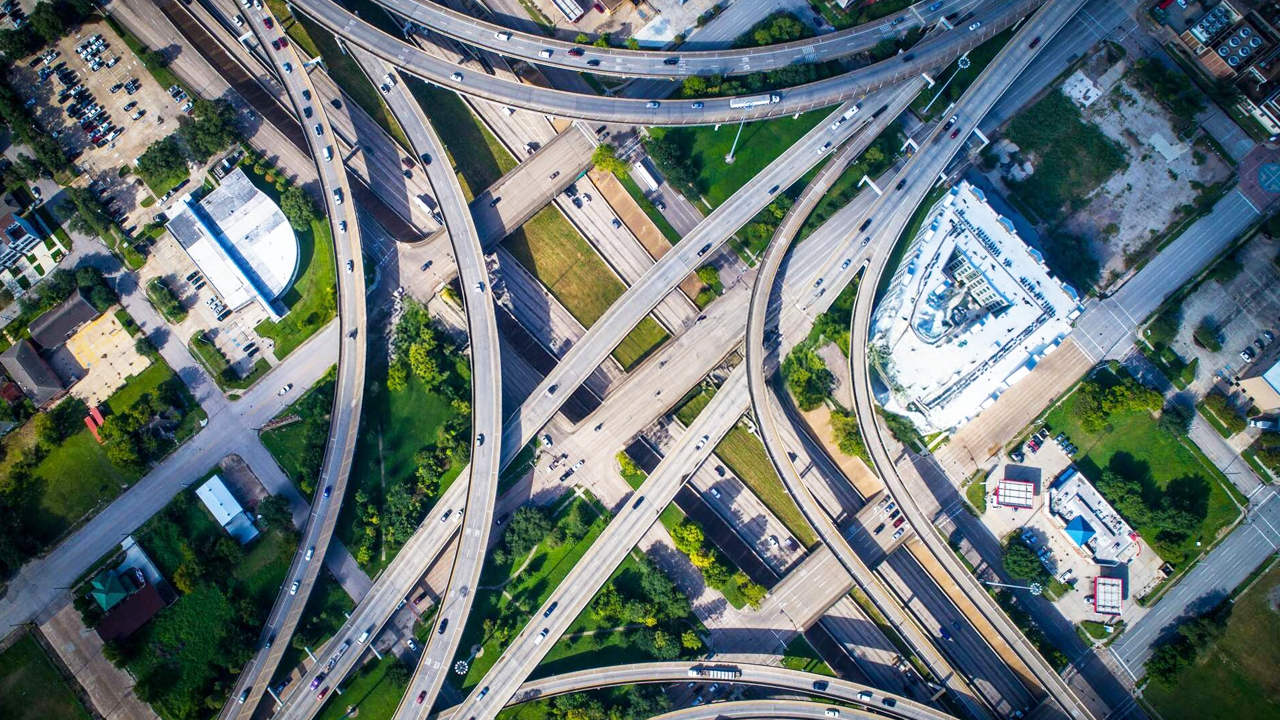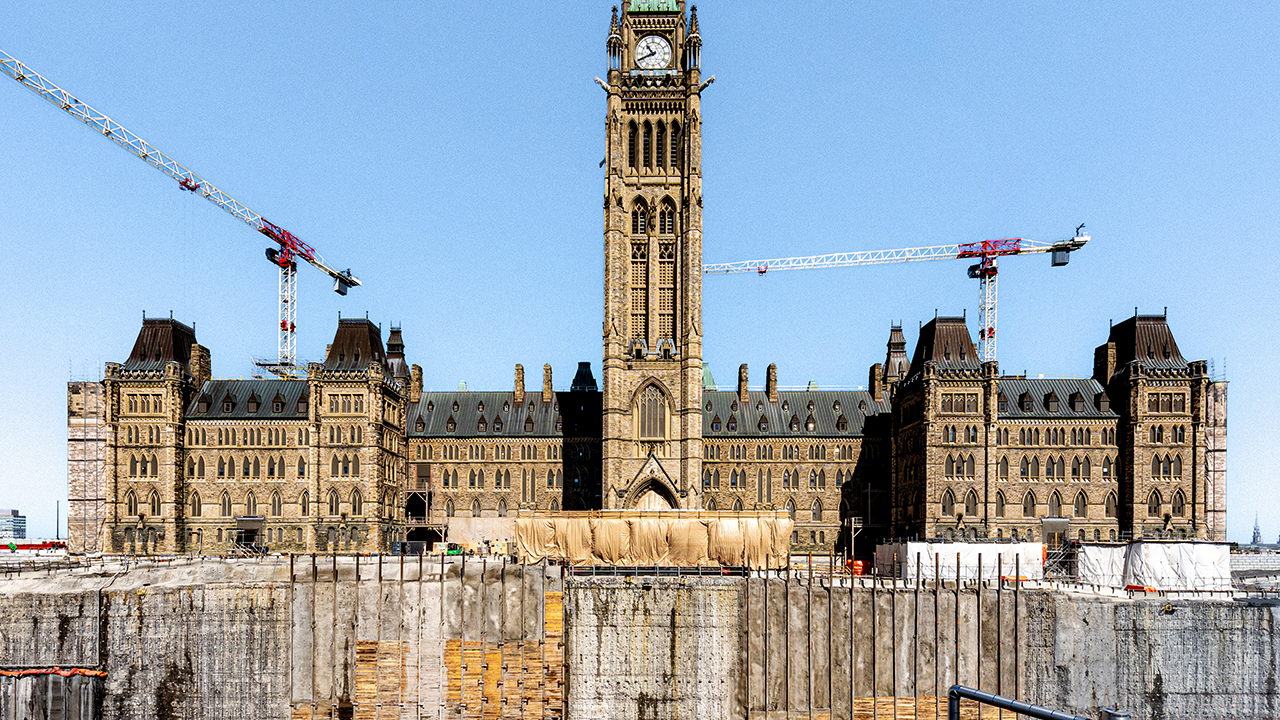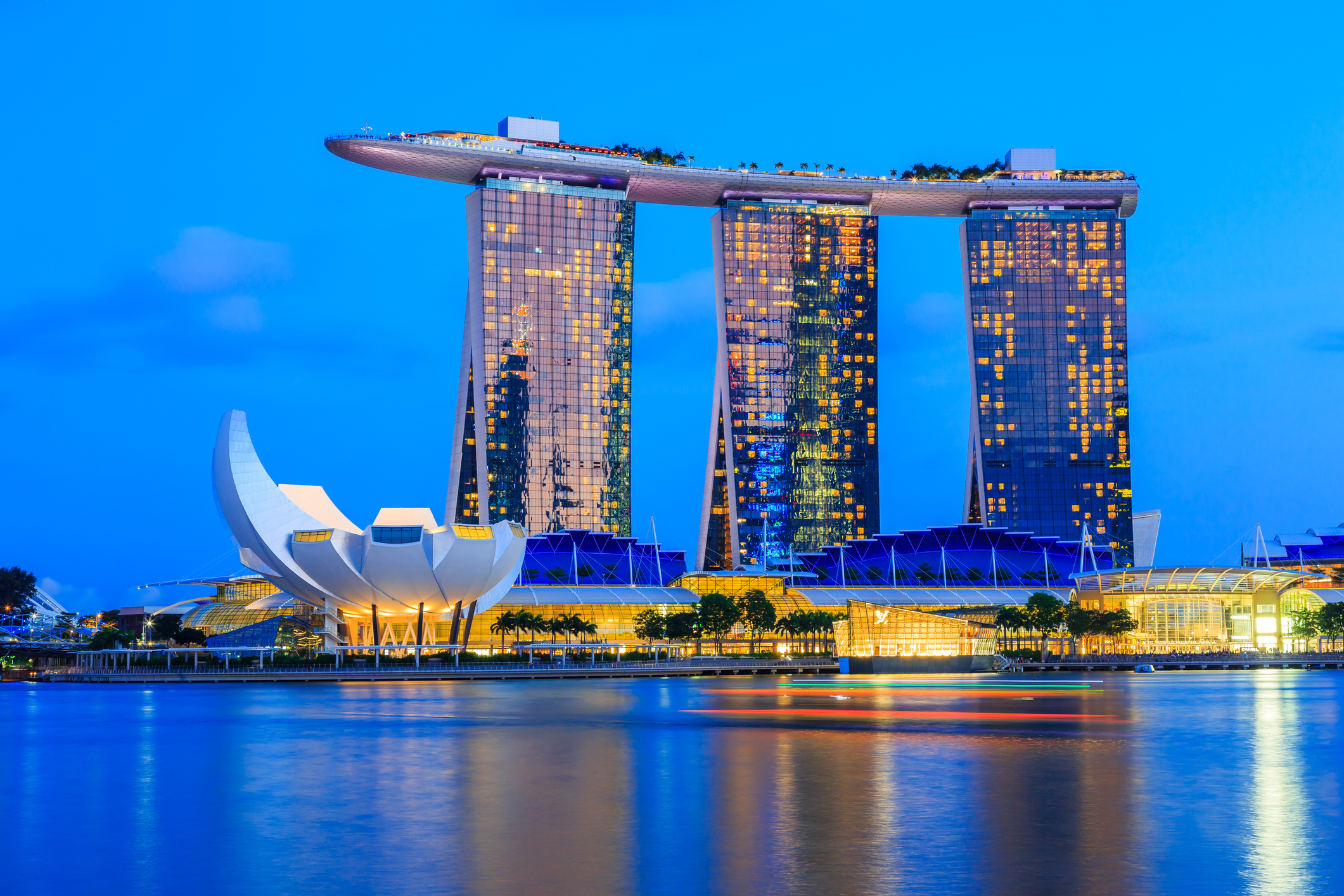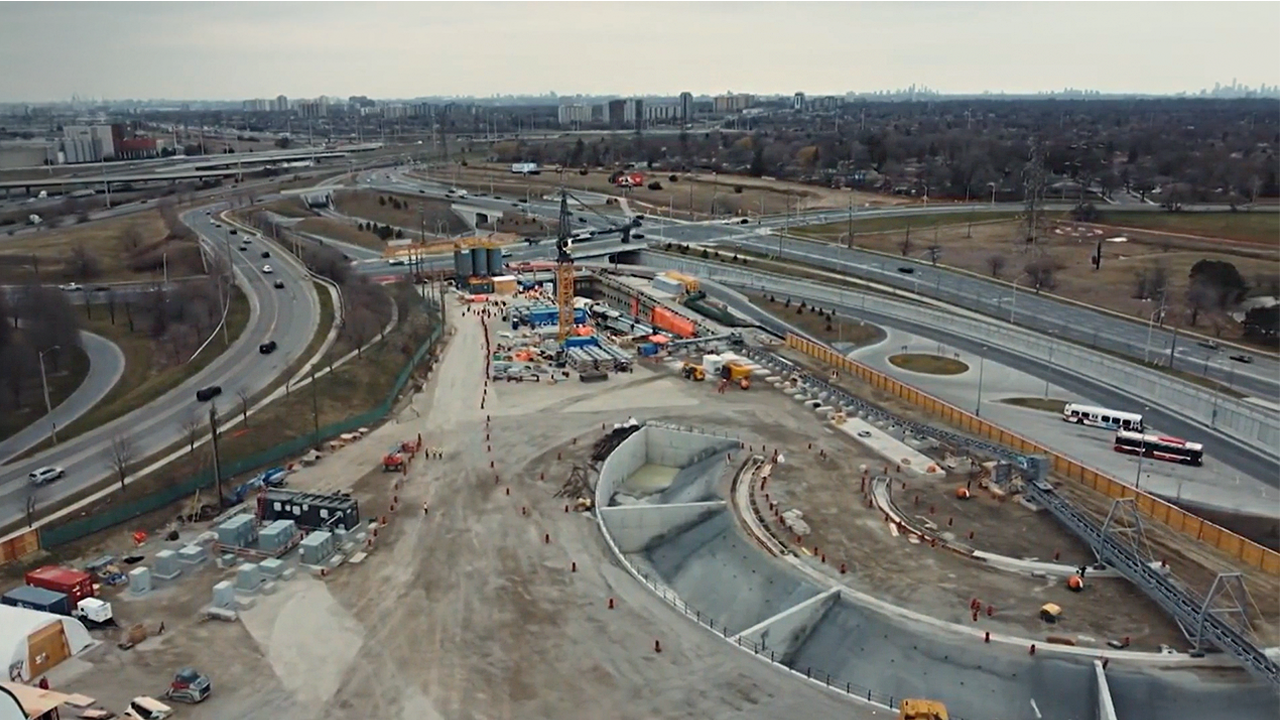Inside The World's Most Complex Construction Project
- Youtube Views 4,027,983 VIDEO VIEWS
Video narrated and hosted by Fred Mills. This video and article contains paid promotion for Procore.
IT'S the world’s most challenging construction project – the largest and most powerful nuclear fusion reactor ever built.
Here, an amazing team of scientists and construction workers are trying to replicate what happens inside the sun, potentially unlocking a source of clean and virtually inexhaustible energy.
And it's demanding one of the biggest international collaborations in history. No fewer than 35 nations are teaming up and combining their strengths to build something that's never been built before.
Without that extraordinary partnership, the epic International Thermonuclear Experimental Reactor (ITER) simply wouldn't be possible.
A lot has happened here since The B1M first visited in 2022. Back then we only scratched the surface of what’s going on inside these walls.
Which is why we went back to the south of France to see how thousands of people from all around the world have been coming together to manage the planet’s most monumental build.
Hidden gem
About an hour’s drive north of Marseille there’s a place that looks like a normal industrial complex from the outside, but inside this set of buildings something truly astonishing is happening.
Experts from dozens of nations have joined forces for one very important science experiment. Together, they hope to finally crack a riddle that’s remained unsolved for decades — creating virtually limitless amounts of energy through nuclear fusion.

Above: The ITER complex when viewed from outside. Image courtesy of ITER Organization.
But before we explain what that actually is, it's important to kind of take a step back and grasp why it's such a big deal. If humanity can make nuclear fusion happen at scale then it could solve one of our greatest challenges and quite literally change the world.
You see, nuclear fusion can generate four million times more energy than fossil fuels like coal, oil and gas. It also doesn’t emit any harmful greenhouse gases, such as CO2, unlike those other forms of energy.
If that word ’nuclear’ makes you feel a bit uneasy then fear not because a nuclear fusion reactor doesn’t create any long-lived radioactive waste either.
And because there’s no plutonium or uranium, using it to make weapons is a lot harder. Instead, it uses tritium and deuterium — both of which are both isotopes of hydrogen.
Achieving fusion
So how does all of this work and why are these reactors taking so much longer to master than the ones we've been using for more than half a century?
Well, producing energy from nuclear fusion rather than nuclear fission, which is what most traditional reactors do, is a lot more difficult.
Instead of splitting atoms apart, fusion reactors force them together in a controlled way, and that causes huge amounts of energy to be released.
It’s essentially what happens inside the Sun — when hydrogen nuclei collide at extreme speeds and temperatures to form helium atoms.
Amazingly, the machine at ITER mimics that process, but contains it inside a structure which, as you can imagine, is not an easy thing to do.

Above: The fusion process showing the isotopes of hydrogen — the most abundant element in the entire universe.
All of the construction work you see at ITER — all the activity going on across this vast site, all those systems, those buildings — revolves around one central, enormous device known as the Tokamak.
To put it in very basic terms, it’s an enormous chamber that uses giant magnets and a whole lot of heat to create something called plasma inside a vacuum.
In years to come, ITER’s Tokamak could unlock a new power source that’s clean, abundant and affordable. That's why it's seen as the holy grail of energy.
If it sounds complicated, it's because it is. And it's one reason why construction works took decades to even begin.
Piecing it all together
The massive assembly hall at ITER is where components come in before they're thoroughly checked and then lifted over into the Tokamak.
The Tokamak alone has a million components and 10 million individual parts, and it's got to be right; there's no room for error.
For instance, with this being one of the biggest and most complex systems of its kind ever constructed, all of the vacuum components have to be 100% leak-tight. Because you really don’t want leaks inside a vacuum, especially when it’s part of a fusion reactor.
Specialist welding procedures are in place, full-scale leak tests will be carried out in the run-up to launch, and, amazingly, ITER is even developing technologies that can detect leaks measuring the width of a hair divided by one million. It’s easy to see why they’re taking this extremely seriously.

Above: In the Assembly Hall, cranes pick up the large components and carry them over for placement in the Tokamak pit. Image courtesy of ITER Organization.
ITER’s beginnings go way back to the 1980s, when Mikhail Gorbachev of the Soviet Union and US President Ronald Reagan formed the international fusion initiative.
With the Cold War nearing an end, the two leaders wanted to bring forth a new source of energy that is “essentially inexhaustible, for the benefit of all mankind.”
After its launch in 1986, other European countries joined the partnership, along with Japan, and ITER was officially born.
Multinational membership
Today, there are seven ITER Members — one of them being Europe with its 27 EU countries. Switzerland and the UK are also partners, but with less direct involvement.
Around 45% of construction funding is coming from those European nations, while China, India, Japan, Korea, Russia and the US are covering about 9% each.
It took until 2001 for the design of the reactor to be finalised, along with a cost estimate of EUR 5BN for the construction.
A few years later, a site was selected for the incredibly unique project and in 2010 building work finally got underway.
Four years were spent building the ground support structure and the seismic foundations for the Tokamak, which itself has been in the works for a decade.

Above: The building where the Tokamak is situated is simply enormous — a seven-storey structure that rises 60 metres above the ground and drops 13 metres below it. Image courtesy of ITER Organization.
The Tokamak Building and the Assembly Hall take up a staggering amount of space, but they’re just one part of ITER. All together there are 39 buildings and technical areas on this huge site.
They include things like cooling towers, a control room, waste management facilities and a cryogenics plant that will make the liquid helium needed to cool the 10,000 tonnes of superconducting magnets.
Now, that’s important because if they aren’t kept close to absolute zero — -269 degrees Celsius to be exact — the magnetic fields needed to maintain the plasma won’t be possible.
There will also be a huge area housing all the high voltage electrical systems and two large buildings for converting the electricity that comes in from alternating to direct current before it goes over to those massive magnets.
Joining forces
So, who is responsible for building all of this? Unsurprisingly, some of the biggest construction firms in the world are involved, including major international collaborations.
One of them is the VFR consortium, which is delivering nine of these structures, including the Tokamak Complex, the Assembly Hall and the Control Building.
VFR consists of two French companies – VINCI and Razel-Bec – along with Ferrovial of Spain. Together, they spent over a decade carrying out civil engineering works on the Tokamak Complex.
“We have installed more than 100,000 embedded plates, we have faced high densities for rebar, we have done specific concrete formulas for the tokamak construction and we have performed complex geometries as well as openings inside the building,” explained Carolina Fradejas Ufano, area manager for the ITER project at Ferrovial.

Above: Around 4,000 metric tons of steel rebar was needed for the foundations of the Tokamak Complex. Image courtesy of ITER Organization.
Kenneth Martinez, Ferrovial’s director for France, added: “This is a very complex project. Many of our people come from Spain and mainly the people from the other companies were French. One of the first challenges that we faced was this difference of culture, so we've been working with them in a very open and friendly way and in a very collaborative way. And the outcome of this has been incredible.”
It’s an extraordinary amount of work for a science project, but what they’re trying to do here simply can’t be done without going big.
“Almost everything is unique. A term very much related to ITER is “first of a kind,” remarked Duco Jansen, construction manager for the ITER Organization. “So, very many elements that are used here are in two ways complicated — it's complicated by the technology that is used, which is very often novel to create certain curves or certain materials that are unique. But it's also due to the size of ITER.
“ITER is very large compared to previous Tokamaks which are already existing around the world, and in order to make these elements in the right dimensions and within the right tolerances — this is an engineering challenge in itself.”
Put a ring on it
One of the key elements during construction of the Tokamak Complex was the “ring fortress.” It’s a massive steel and concrete bioshield that wraps around the Tokamak.
Its purpose is to protect workers and the surrounding environment from radiation when the fusion reaction kicks in.

Above: The bioshield — also known as the "ring fortress" — is three metres thick and six storeys high. Image courtesy of ITER Organization.
As Europe is the host member, most of the buildings and infrastructure are coming from across this continent. But one crucial element was built and supplied by a nation much further away.
The ITER cryostat is the largest stainless steel vacuum chamber in the world, and it was manufactured in India.
Weighing almost 4,000 tonnes, it surrounds the vacuum vessel and the magnets, ensuring everything stays cool and protected. Due to its immense size, it had to be divided up into 54 segments and shipped to Marseille in stages.
But that wasn’t the end of their journey; they still had to be transported to the actual facility over 100km away from the sea.
The long and winding road
Luckily, a specially modified road was built for that exact purpose. Called the ITER Itinerary, it’s a route stretching all the way to ITER HQ from the nearest port, enabling the largest pieces of the tokamak — weighing hundreds of tonnes — to be carried there on the back of huge vehicles.
All along it, bridges have been reinforced, junctions have been adapted, roadways have been widened, including where the route passes really close to some big cliffs.
It might sound like a lot, but if it hadn’t been done, many of the bigger components simply wouldn't have got through.

Above: Roads had to be upgraded to allow the largest segments to be carried to site. Image courtesy of ITER Organization.
Other examples of parts that came from outside Europe include the toroidal field coils. Thought to be the most technically challenging element of the whole build, they have now all been successfully manufactured.
They’re the biggest, most powerful superconducting magnets ever designed and half of them were produced in Japan.
All together, these components and their superstructure weigh 6,000 tonnes — accounting for more than a quarter of the Tokamak’s overall weight.
Cross-continental collaboration
The complexity of this project really is mind boggling. But the amazing team of construction workers who are putting it all together is almost as intricate as the machine itself.
An estimated 15,000 workers from 5,000 companies have taken part in the construction, and around 90 countries are represented in the workforce, making ITER a truly global project.
It means that teams on the ground are not just faced with the incredibly complex task of assembly. They're also dealing with different construction methods, different working cultures, even differences in spoken language across the site every day.
For example, although English is listed as the common language across the ITER enclave, only about 15% of the Organization were native speakers in the early part of construction.

Above: ITER claims it’s the “broadest international participation of any science project on record.” Image courtesy of ITER Organization.
One thing that’s proven crucial to delivering a project of this magnitude is the use of technology.
Digital platforms like Procore have helped to boost communication and collaboration, as well as efficiency, on a scheme that certainly demands it.
Ferrovial has been using Procore to complete a critical contract called TB20. Awarded by Fusion for Energy, ITER’s European domestic agency, it involves designing, supplying and installing more than 200 nuclear doors for the Tokamak Complex.
Since embracing the tech, Ferrovial has seen significant improvements in areas such as project management, decision-making and problem solving.
“Testing, manufacturing, construction, and all these records and BIM models require the use of state-of-the-art technologies such as Procore that we couldn't avoid using here. That was a must for us to have success in the project,” Martinez said.
Making progress
Technological assistance like this has been critical to getting ITER to its current position, and it’s steadily helping it inch towards its goal of coming online in the not too distant future.
As of right now, more than three quarters of all design, manufacturing, construction, transport, assembly and installation activities have been completed.

Above: Without tools such as Procore, Ferrovial says it "wouldn't have been able to carry out these works." Image courtesy of Ferrovial/Procore.
So, how on Earth is ITER creating what is basically a mini star here on Earth to generate power? At the centre of the Tokamak is an enormous vacuum chamber, consisting of a large vessel surrounded by powerful superconducting magnets.
Hydrogen fuel is released inside, where it forms plasma — a super-hot gas full of electrical charge. To reach this point, the hydrogen atoms are heated to extreme temperatures — as high as 150 million degrees Celsius. This is the part where they fuse together and unleash all that energy.
The enormous D-shaped magnets — those toroidal field coils we told you about earlier — confine the plasma inside the vessel, and there are 18 of them in total. They do this in combination with six ring-shaped magnets — the poloidal field coils.
Once the plasma has been created and held in position, this place will become both the hottest and coldest place in the known universe.
Starting up
When everything is assembled and in place, it’ll be time to turn it on. The original idea was to do that for just a few milliseconds on low power to create something known as first plasma, but that all changed recently as we’ll come on to in a bit.
Before we move on it's important to recognise that another team of scientists has already managed to achieve nuclear fusion but on a limited scale. What ITER are doing is much bigger and takes things quite a step further.
It wants to become the first to create ‘burning plasma’. That’s where the fusion reaction becomes self-sustaining and continues to generate energy without much additional heating.

Above: A graphic showing plasma being generated inside the Tokamak.
The vast majority of the physical infrastructure is already built and in place, from the main buildings to the support structures, the networking, even the drainage systems.
But despite that and the insane level of scrutiny that goes into making sure that every piece of the puzzle is correct before it gets locked into place, there have, unfortunately, been some setbacks.
Technical difficulties
In November 2022, ITER revealed significant issues had been identified with some of the components, which left them no choice but to make time-consuming repairs. There were cracks in cooling pipes and non-conformities in parts of the vacuum vessel.
It means that work on the assembly of the Tokamak is currently paused and can't continue until those problems have been sorted out.
It's also not the first time the organisation has faced complications that have caused delays. Since the initial design was revealed in 2001, there have been rising labour and material costs, advancements in fusion science that had to be factored in, and more time has been spent on assembly and commissioning than first thought.
This called for a design review in 2007, followed by another in-depth analysis in 2016. By then, the price tag is thought to have reached EUR 22BN. The target date for first plasma was pushed back to 2025, with full operation expected ten years later.
Then came Covid-19, followed by those technical issues we just mentioned, all of which has pushed things back even further.
Another project plan with new dates and costs was put forward in June 2024, and is currently under review. The idea now is to do away with ‘first plasma’ altogether, and have the machine start up at full power to enable more advanced experiments, but this won’t happen until 2036. The cost has jumped up again too — by an estimated EUR 5BN.

Above: Duco Jansen (right) tells The B1M's Fred Mills about ITER's plan to address issues with the Tokamak's assembly.
“Not everything went fluently. There are some quality aspects that we had to take care of, which were mainly related to the vacuum sectors. So, the confinement vessel, and also with the thermal shields that separate the very warm from the very cold. Both topics were unrelated but had to be resolved,” admitted Jansen.
“But fortunately we have made action teams to solve them. And now we are ready to have the first module back into the pit. And that is going to happen early next year.”
The project hasn't gone entirely smoothly, but teams here are trying to break a new frontier. They're pushing the boundaries of science, construction and engineering.
They're doing something that hasn't been done before, so trying to get it right first time was always going to be a bit of a tough ask.
Leading the way
Now, the thing about ITER is — it might be the biggest fusion project in the world, and we’ve explained how this breakthrough, when it comes, could be revolutionary.
But it's never actually going to produce electricity for the grid. And that's because this place is an experimental reactor.
The idea is that they use this place to prove that fusion can be done at the scale we need it to be done first and then for others to come in and learn from what's been achieved at the ITER site.

Above: Supports for the 18 toroidal field coils are wrapped in pink protective plastic as repairs continue. Image courtesy of ITER Organization.
If that sounds like a bit of an anticlimax, it shouldn’t be because there are multiple other organisations designing and building their own fusion reactors — and they too are making progress.
Germany’s brilliantly-named Wendelstein 7-X Stellerator already achieved first plasma back in 2015, and has since managed to maintain a stable reaction for a whole eight minutes.
And in December 2022, scientists at the National Ignition Facility in California — part of the Lawrence Livermore National Laboratory — made their own piece of history.
They became the first to successfully produce more energy through a fusion reaction than what was put in to start it, and they did it through a completely different method to ITER’s machine.
Instead of generating plasma in a Tokamak, lasers were fired at a tiny capsule filled with those same hydrogen isotopes used at ITER — tritium and deuterium.
The capsule then imploded from the power of the lasers, forcing the atoms to collide — or fuse — together, releasing energy. From the 2.05 megajoules of laser energy that went in, 3.15 megajoules of fusion energy came out.
United they stand
But that doesn’t mean those clever Californians have solved the whole thing, and others like ITER might as well give up because they’ve lost the race.
Those lasers take a very long time to fire, that net energy gain is tiny compared to the massive power demands of today and it’s not actually a race at all — far from it.
All of those organisations as well as private startups that have begun their own projects in recent years, are all united under one goal to bring nuclear fusion energy to the grid.
Where ITER is a bit different is that it's uniting 35 nations, putting together all their resources, all their talent, to help this project take a big step and go where no one's gone before.
This video and article contain paid promotion for Procore. See how Procore enables intelligent project management through one platform here.
Video narrated and hosted by Fred Mills. Additional footage and images courtesy of ITER Organization, Al Jazeera, Arirang News, CBS Philadelphia, DW News, Encyclopedia Britannia Films, Ferrovial, Jan Michael Hosan, Lawrence Livermore National Laboratory, MPI for Plasma Physics, Procore, Ronald Reagan Presidential Library, RSWilcox/CC BY-SA 4.0, The Guardian and WGBH.
We welcome you sharing our content to inspire others, but please be nice and play by our rules.







